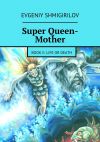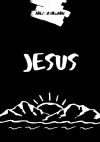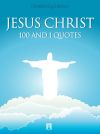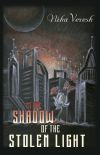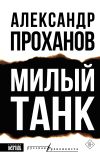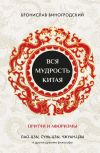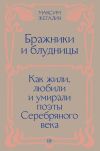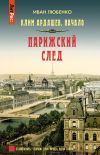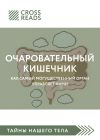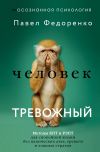Текст книги "Light and Dark Images of Apocalypse"
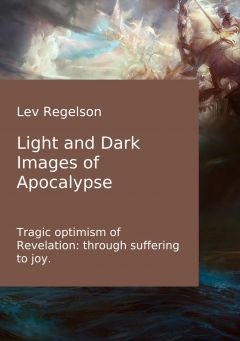
Автор книги: Lev Regelson
Жанр: Эзотерика, Религия
Возрастные ограничения: +16
сообщить о неприемлемом содержимом
Текущая страница: 1 (всего у книги 4 страниц) [доступный отрывок для чтения: 1 страниц]
Дуапр
Apocalypse (Revelation) of apostle John the Divine

Apostle John the Divine on Pathmos by reception of Apocalypse (Revelation). John at Patmos. The Nizhny Novgorod, Art Museum, XVII c.
Whenever a man of nowadays hears a word "Apocalypse", he imagines scenes of horror and death. Gloomy predictions and prophecies describe the future as the "end of world". However, if we read the Apocalypse (Revelation) of St. Apostle John the Divine or Theologian with an open mind, we will realize that what is really implied in this book is a triumphant paean heralding the Coming of Jesus Christ. The world of evil and misery is transforming into a world of light and joy. The forces of Darkness are desperately striving to seize the initiative and capture the earth, but they will sustain a crushing defeat.
It is the radiant images that primarily attract our attention when we read the revelation, though we have to take into account the forces of Darkness. The interpretive approach we have adopted blends artistic imagery with theological intuition emphasizing the traditions of the early Christian, Holy Fathers, Byzantine and Russian Churches. Yet this essay is neither a theological treatise or scholarly study.
Though we have no intention of eschewing the value of contemporary biblical appraisal, which has so signally enriched our understanding of the human factor in the writing of the Holy Scriptures, despite the multiplicity of such writers, it must necessarily be stressed that their principal, constant co-author is God Himself. The writings of the Holy Bible may reveal a new meaning to each successive epoch and generation, as the said meaning is truly infinite.
Each chapter and verse of the Scriptures, the time of whose writing may be centuries apart, interact as the moments of one grand symphony. The uncertain, reachable meaning of the biblical prophecies furnishes one more indication of their divine origin; thus is the freedom of man safeguarded against attempts at a logically coerced interpretation. In no position to encompass the entire range of imagery covered in the Apocalypse (Revelation), we must of necessity confess that much still defies comprehension. Indeed within the stupendous panorama that Apostle John the Divine reveals we discern merely the contours of the leading personages and some crucial events.
One Who sits on the throne
He is the principal personage in the Apocalypse, to wit:
"Оur God which sitteth upon the throne" (7:10).

Jesus Christ – Ancient of Days. Russian fresco, Church of Pokrov on Nerl, 1199.
As God He is mentioned in the Revelation fifty odd times, as «The One who sits on the throne» fourteen times.
At once, a howling contradiction arose with the entire context of the Holy Write, which says:
Our God is an invisible God!
«No man hath seen God at any time» –
the Gospel of John declaims (1:18).
Which is most forceful, provided one agrees with the ecclesiastical tradition averring that St. John the Evangelist wrote both Revelation and Gospel, and, moreover that the Apostle wrote Gospel later. St. Justin the Philosopher, who lived in Ephesus at the start of the second century and who was personally acquainted with many of the disciples of St. John the Theologian («the Divine»), clarifies:
"The Holy Write asserts that God appeared to Abraham, Moses and other Blessed of the Old Testament. Yet he was not God the Father, insofar as God the Father was
ever higher than the heavens, never appeared to anyone and did not converse with anyone face to face."
Yet St. John tells us that he saw God! In that selfsame image God appeared before to the Prophet Daniel who named Him "The Ancient of Days" (Dan. 7: 9, 13, 22).
The Ancient of Days or the One who sits on the throne is the Lord God the Pantocrator: yet He is not God the Father. Provided we adhere to biblical reality and do not reduce the grandeur of the Epiphany to allegorical scenes, we shall be constrained to conclude that He who revealed Himself to St. John the Theologian and to the Prophet Daniel was Jesus Christ in His divine nature
Having told this, we already entirely have appeared in the realm of holy fathers theology, with its three dogmas: about the Holy Trinity, about the two natures of Christ and about the icon-worship.
The issue mooted is how it is possible to see by the human eyes Jesus Christ as God. The Holy Trinity is God the Father, God the Son, God the Holy Spirit; not three Gods but One God; not one Person but three. Three Persons of the Holy Trinity are of one nature: if the Father is not to be seen, hence the Son is not to be seen and the Holy Spirit is not to be seen.
Now Jesus Christ is God's Son, in Whom
“dwelleth all the fulness of the Godhead bodily” (Col.2:9).
So how can we affirm that He was seen by both St. John and Daniel?
After the dogma of icon-worship won a victory in the eighth century, it was stated that only what could be seen by the human eye could be depicted. Since Daniel had seen the Ancient of Days, hence He could be depicted on icons. And He was indeed often and profusely thus portrayed. Besides the captions of «The Ancient of Days» and «Jesus Christ» encountered as synonyms on one and the same icon. Moreover Byzantine theologians identified the Ancient of Days and, consequently, Jesus Christ as God, with Whom Israel know as Yahweh:
I AM THAT I AM Ex. 3:14
What then of the invisibility of God?
The matter remained not fully clear until there emerged the teaching of the Divine Energies, associated with the name of St. Gregory Palamas, the great fourteenth-century Byzantine theologian.
For centuries Eastern Christian monks practiced the transfiguration of their nature similar to the Transfiguration which Jesus Christ manifested on Mount Tabor. Prayers bodies began to emanate a radiation from within, and there was no question but this light was of a divine nature that did not exist in the created world.
The need to evolve a theological explanation for this practice had led St. Gregory Palamas to evolve in detail that inherently biblical creed of the Divine Energies. Rather was he constrained there to due to the emergence of the false allegation as if the light on Mount Tabor was of natural origin similar to the luminous aura of the Hindu yogi.
According to the teaching of St. Gregory Palamas, which the local councils of Constantinople had confirmed, God by His very nature is invisible, undepictable, incomprehensible. Which St. John the Evangelist implies when he says:
«No one has ever seen God» (1:18),
and which is why Moses forbade the representation of God.
However God is alive and operating. Actions, for which the Greek is «energies», of the Holy Trinity is that selfsame divine nature emanating from itself, pouring out. In its quality of energy Divine nature is visible, depictable, comprehensible and, moreover may penetrate from inside and fill human nature.
Hence, we may now understand how God could become visible. Set of the energies of the Holy Trinity forms the eternally uncreated Divine «body» which can be visible to the human eye. In this eternal embodiment of His, the One God is Jesus Christ, He is also Yahweh, He is the Ancient of Days and the One who sits on the throne. In Paradise, Adam saw Him and conversed with Him. And hence, we, employing our erroneous terms, could say that God had revealed Himself to Adam in His «human image». It would be correct though to say that man is created «in the image and likeness» of God, of Jesus Christ in His Divine body.
Lamb
The name of "The Lamb", that is repeated some thirty times in the Revelation, designates Jesus Christ as the man who sacrificed Himself to redeem us:

Jesus Christ the Lamb. Agnus Dei, Emory University, Pitts Theology Library.
“Thou wast slain, and hast redeemed us to God by thy blood out of every kindred, and tongue, and people, and nation…” (5:9).
For which reason St. John announces in his Revelation:
“Worthy is the Lamb that was slain to receive power, and riches, and wisdom, and strength, and honour, and glory, and blessing” (5:12).
Therein is all essence of Revelation: “One slained” is receiving power. The Apocalypse demonstrates the conflict between two worlds, two types of relations between personalities, two types of power and authority.
In the world of the Beast, the authority belongs to the butcher, in the world of God – to the victim. The Apocalypse thereby reveals to us the sense of the Gospel.
People with vestiges of pagan consciousness now and again consider the character of the gospel Jesus as too soft and weak, well-nigh feminine. Nothing could be further from the truth. Jesus is the possessor of the utmost courage of which man is capable, yet at the same time is the bearer of genuine power. That is simply such courage and such power. Pagans will never comprehend that until directly affected by this force:
“These shall make war with the Lamb, and the Lamb shall overcome them: for He is Lord of lords, and King of kings” (17:14).
That authority was manifested on the Cross when Jesus Christ said of his butchers:
«Father, forgive them; for they know not what they do» (Luke 23:34).
And this word does not remain in vain, because He speaks as one that had authority: to denounce or forgive.
The forgiveness or curse that the victim utters upon his butchers, is of absolute power, for thus it is ordained by God. Only once in the New Testament, and precisely in the Revelation, there comes from the lips of the martyrs the verdict of condemnation. This occurs after the breaking of the Fifth Seal, when the souls of those «slaughtered for God's words» cry out to God:
“How long, O Lord, holy and true, dost thou not judge and avenge our blood on them that dwell on the earth?” (6:10).
Indeed, something very strange and extraordinary must happen in the world for the usual entreaty victims make to forgive their butchers to yield to a cry for vengeance… It is told to them, that their requirement will be executed:
“And white robes were given unto every one of them; and it was said unto them, that they should rest yet for a little season, until their fellowservants also and their brethren, that should be killed as they were, should be fulfilled” (6:11).
By now we wonder what relationship may exist between the One who sits on the throne and the Lamb.
These two Persons often appear side by side. Thus the Lamb came to the One who sits on the throne (5:7) in absolutely the same manner as the Prophet Daniel saw in his vision when «one like the Son of man» (Dan. 7:13) comes to the Ancient of Days. Now if the One who sits on the throne is Jesus in His Divine nature, while the Lamb is Jesus in His human nature, we must perforce come to the conclusion that Jesus Christ is approaching… to Himself. How can that be possible?
At this point we cannot dispense with a brief excursus into the holy fathers theology.
The Church creed as to the relationship between the divine and human natures of Jesus Christ was formed and evolved in the strenuous and long struggle against the so-called «christological heresies» that shook and rocked the Christian world in the 5th-7th centuries. The first such heresy was Monophysitism, asserted that Jesus Christ nature is only one: divine or “divine-human”, and that everything human in Him was absorbed by that of Divine. The ecumenical council of Chalcedon defined Jesus Christ to be one Person or Hypostasis (now would tell – Personality) in the two natures, one wholly divine and the other wholly human.
He is the perfect God and the perfect Man. The two natures are not merged one with another and each of natures by joining remain without alternation, keeps the fullness of it's properties.
However a large proportion of the believers embraced Monophysitism, most of them would have later accepted Islam. But the Churches of Armenia and Ethiopia profess that creed to this day. It was too hard to imagine how the God, while remaining God, also had become the man. That is not only hard, but indeed impossible to comprehend! Here we confronted the one and only, yet absolute, boundary to human intelligence: to wit, the unattainability of the Divine nature. All else is within the bounds of human intelligence, except that, because to comprehend the Divine essence – would mean to become equal with God. Only given to God is the knowledge of how He could become man. Only given to God is the knowledge of how to create the world from nothingness. Only given to God is the knowledge of foreseeing the action of freely human will. Only given to God is the knowledge in fullness of what fate holds in store for every human being. All these things are the manifestations of the Divine nature, the absolute prerogative of the Creator. Hence every attempt to penetrate the unfathomable always resulted for the human being in false fantasy of loss of faith.
After the ecumenical council of Chalcedon was emerged a new heresy, Monothelitism, which claimed:
«Let Christ have two natures but only one, divine or divine-human, will».
Again the Church retorted:
”There are not one, but two distinct wills in Christ, divine and human, in such a way that the human will freely and docile follows His divine will”.
However the deal had not ended upon that. Yet another heresy had born: Monoenergism, which asserted:
«Let in Christ are two natures and two wills but is only one action (energy), divine-human.»
And again the Church replied in the spirit of the Chalcedon: There is not one, but there are two distinct actions in Christ – divine and human.
Does the great controversy already completed?
Apparently, it does not.
As before the significance of this controversy is immensely great.
Many of the believers have today a confused, incoherent pagan notion of the gospel's Jesus as some kind of half man – half god. Thus one may hear it alleged, even written, that
"as man He was thirsting and hungering, but as God working wonders”.
Nothing could be more alien to the spirit of the Chalcedon dogma than such allegation. It is the belittling of Christ as the man and, at the same time, mixing up of the Divine and the human.
As the God, Jesus Christ is eternally resided оn the throne of Divine Glory, while in the events described in the Gospel “the man Christ Jesus”(1 Tim. 2:5) operates, i.e. Jesus Christ in His human nature.
Jesus Christ the man not only performed miracles, but resurrected and ascended to heaven. He, of course, is not merely a man, but God who has become also a man and, hence, may speak of Himself as of God:
«Before Abraham was born, I am» (John. 8:58),
however these words coming from human lips.
In the Revelation of St. John, Jesus Christ the man is presented not only in the meek appearance of Lamb. We see Him there also in regal glory and all conquering might. Thus He appeared to St. John who saw:
"One like unto the Son of man, clothed with a garment down to the foot, and girt about the paps with a golden girdle. His head and his hairs were white like wool, as white as snow; and His eyes were as a flame of fire. And His feet like unto fine brass, as if they burned in a furnace; and His voice as the sound of many waters. And He had in His right hand seven stars: and out of His mouth went a sharp two-edged sword: and His countenance was as the sun shineth in his strength” (1:13-16).
Daniel saw "The Son of Man” in a prophetic vision, but the One now manifested to St. John was Jesus Christ as a very real man, who had become indeed such by the moment of this vision.
The Revelation of St. John moves us to admit that Jesus Christ, in full accordance with His two natures, likewise possesses two, divine and human, bodies. To say that One Person (Personality) has two bodies is no more and no less wondrous than to say that One Person has two natures, two wills, two actions.
If we shall accept, that the One Who sits on the throne and the Lamb – is accordingly Jesus Christ as God and as man, we shall hence be cognizant of the religious meaning of the apocalyptic epoch.
Biblical history from Adam to Jesus, was the time when Jesus Christ revealed himself as God, as Creator, as One Who Is Being (Yahweh).
Over the period from the Nativity to the beginning of the apocalyptic events Jesus is revealed as a man Who preaches, is crucified, resurrects, ascends of heavens and is always increasing in the rays of Divine glory.
As the man, or Lamb, He is leading His Church, feeding Her on His Body and Blood, revealing Her the Divine mysteries, which He gradually is comprehending Himself.
Meanwhile the gist of the coming apocalyptic epoch – is the revelation of Jesus Christ simultaneously as God and as man, in the joint action of His two natures. What it will mean, we just should get to know.
Archangel Michael and his angels
In events of the Apocalypse it is mentioned of about hundred angels, who are carrying out concrete functions. Others places in the New Testament notes “many thousands” (Jud.14), “myriads” of angels (Heb. 12:22). Who are angels? They are beings whose
main feature is that unlike man, they are not endowed with any earthly flesh.

The icon: Archangel Michael and his angels. Russia, 19th century
They were created long before man and were designated to assist God at the different phases of natural evolution and human history. Possessed of an individual self-awareness and free volition, some angels have got into dispute with God and even have come to counteraction Him in diverse ways and extent. The Archangel Michael is the head of the angels who did not swerve from their devoted fidelity to their Creator.
Who ranks first on his nature, angel or man? In other words, is possession of an earthly body an advantage or drawback?
On the one hand the human body bears within its incredibly complex and rich structures the seal of Divine Wisdom, along with the fullness of natural life and an inexhaustible potential for development. Even after death the human soul differs in principle from an angel's namely in that it retains the full memory of the life of that body which it temporarily, prior to resurrection, has part with. Though some angels possess of ability to settle themselves in the bodies of animals or human beings and feed on their energies, no one of angels will ever have such full knowledge in respect of the human body, not one can have so intimate and profound a bond and unity with every single cell and molecule, which by the nature are peculiar to the human soul.
Yet, on the other hand, how great the misfortunes and limitations are that the body imposes upon man! Hunger, disease, the possibility of being subjected to every conceivable violence, rooting to the spot, ageing and the inevitably of death, all these woes and frailties to which human flesh is subject are unknown to the angel.
Still biblical tradition unreservedly places man above angel. The Holy Scriptures qualify only man as created in God's «image» and «likeness» (Gen. 1:26-27).
Hence it is stated that “we are to judge angels" (1 Cor. 6:3), «for it is not to angels that He has subjected the world to come» (Hebr. 2:5).

Archangel Michael. Mon. of St. Catherin, XIII
Man's distinguishing feature from angel, to wit, his natural body, comprises part and parcel of God's image within man and symbolizes the supreme human worth.
As for the body's sorrowful, morbid condition, that is due to the violation of being's Divine order, wherein the highest serves the lowest and the strongest the weakest. For in our mundane order of living, the sinful soul exploits the body for sake of pleasure or vanity instead of painstakingly fostering it as God's invaluable creation, preparing it to the future resurrection.
What is the designation of angels?
It is to serve humbly in the effort to redeeming and creatively cultivating of nature and mankind, yet withal take up spiritual arms in warring against their mutinous brothers who work violence against nature and the human race.
That is what the Archangel Michael and his angels do.
The Archangel Michael is mentioned thrice in the Revelation of Daniel. Thus the «man» whom Daniel beholds, and who, to judge from the description is very Jesus Christ as God, tells the prophet of His struggle against the «king of Persia»:
«But, Michael, one of the chief princes, came to help Me» (Dan. 10:13);
«There is none that holdeth with Me in these things but Michael your prince» (Dan. 10:21).
Distinctly implied is the unnamed patron angel of Persia and Michael as the patron angel of Israel.
Yet Daniel's third mention of Michael constrains us to regard him as a man of this earth. In connection with the description of the campaigns of the «vile» king (in John's Revelation there corresponds to it an image «a beast from an abyss», 11:7) – Daniel says:
«And at that time shall Michael stand up, the great prince which standeth for the children of thy people» Dan. 12:1.
What is this people?
Daniel obviously means Israel; however, in John's revelation it is spoken about prompt occurrence as though a new people comprised of the number believing in Jesus Christ. This «new Israel» also has its patron angel: it is the
“angel ascending from the east, having the seal of the living God” (7:2).
He ranks the twelve tribes and
«sets the seal of our God upon the foreheads of his servants» (7:3).
Scarcely can one doubt that the selfsame Archangel Michael is patron also of the new Israel…
In John's Revelation there is a direct mention of a name of Michael:
“And there was war in heaven: Michael and his angels fought against the dragon; and the dragon fought and his angels, and prevailed not; neither was their place found any more in heaven” (12:7-8).
Of exceptional significance here is not only the said event but its entire frame of reference.
Let us now note what came directly before that.
St. John observes a «great portent»:
“Women clothed with the sun… and she was with child; and she cried out, being in labor and in pain to give birth” (12:1-2).
And next:
«Dragon… stood in front of the woman who was about to give birth, so that when her child was born he might devour it» (12:4).
This is the dragon that is cast down by Michael, following which the attempt to «devour the child» fails.
«She gave birth to a male child, who is destined to rule all nations with an iron rod. But her child was snatched up to God and his throne» (12:5).
The link between the birth of the child and the throwing down of the dragon is so intimate that one is fain to conclude that the child and Michael are one and the same.
But if an angel is born of a woman, that signifies he became human being!
That is indeed a great event in the world of angels!
Henceforth and forever their Head has acquired an own human body, and while retaining the qualities of an angel supplements them with the properties of human nature. Archangel Michael and his angels will approach the new level of their existence. Through him other angels true to God are in some manner endowed with the ability to initiate themselves into the mystery of human life in a body, and, above all, into the mystery of Jesus Christ the man: “things the angels desire to look into” (1 Peter. 1:12). Insofar as Jesus is God who has become man, the angels have via the human body a qualitatively new way for communication with God. We shall yet speak of the role that Michael acts in the Revelation, where he stands forth under another names. But now it is necessary to answer other question: who is the woman who gives birth to him?
Woman robed with sun
This image astounds all who seek to interpret it by virtue of its uncommon cosmic order. The Holy Bible affords a host of stern condemnations of all who worship Sun, Moon or stars, yet here all these attributes are unexpectedly positive. «Next appeared a great portent in heaven, a woman robed with the sun, beneath her feet the moon, and on her head a crown of twelve stars. She pregnant, and in the anguish of her labor she cried out to be delivered» 12:1-2.
The air and the earth help her to escape the dragon's clutches:
«But the woman was given two great eagle's wings to fly to the place in the wilds…out of reach of the serpent. From his mouth the serpent spewed a flood of water after the woman to sweep her away with its spate. But the earth came to her rescue and opened its mouth and swallowed the river which the dragon spewed from its mouth» 12:14-16.
If we are to take this vision as a prophecy referring to a real woman active in the apocalyptic epoch, then who could she be?

Woman of the Apocalypse. Mexican painter Cristobal de Villalpando, 1686
Could she be the very soul of nature that had become human being?
May we explain what it means.
Practically all global religious cognition invests the material nature with spiritual features and in this respect the Holy Bible is no exception.
Thus, the Creator assigns the earth as it were a creative task:
«Let the earth bring forth the living creature» (Gen. 1:24); further the earth refuses to serve the fratricide Cain (Gen. 4:12) and finally the earth quakes as Jesus breathes his last on the cross (Matt. 27:51).
The Apostle Paul doubtlessly implies all of material nature when he says that the created universe:
"was subjected to futility not of its own will”, that it “will be set free from its slavery to perishing into the freedom of the glory of the children of God”.
And further he continues:
“And not only this, but also we ourselves, having the first fruits of the Spirit, even we ourselves groan, within ourselves, waiting eagerly for the adoption, (or: our adoption as sons) the redemption of our body” Rom.8:20-23.
The art of every age and nation has far-sighted in the nature the beginnings of life and cognition. Especially it has been true of pagan religions which often deified the world's living soul, unmindful of Him Who created it. We are warned against this obstinate delusion, against the dangers of a new paganism, by one of the angels in the Revelation who cries:
"Fear God and give Him glory; because the hour of his judgment has come. Worship him who has made heaven and earth, the sea and the springs of water” 14:7.
Does this refer to the earth or to the Cosmos generally?
We know that the Universe is rapidly expanding, due to which it has already assumed colossal proportions, whereas the Earth and the solar system are but most modestly located on the fringe of one of the galaxies. However, in spiritual plane, quantity and dimensions are of no autonomous significance. The Holy Scriptures ever teach us that what directly originates from God is not so great in dimensions but immensely rich in content. Quite likely for the Creator, the Cosmos is naught without this small planet of ours on which He, having become man, was crucified.
In the light of the knowledge we currently possess, we cannot eschew the probability that some of the angels that abandoned God, may seek by virtue of their own creative actions to populate the Cosmos with life-forms that God cast out in remote antiquity. Perhaps, transgressing upon the Divine ban they continue to intrude into our life on earth and are prepared to participate in some of the apocalyptic events. And their deeds will be judged by Him Who sits on the Throne.
At any rate the symbolism of the Revelation indicates rather that the Woman Robed with the Sun, is the soul of our Earth, that having become human, assumes for the first time the fullness of individual being. Meanwhile the Sun, the Moon and the twelve stars, which last apparently indicate the signs of the Zodiac, constitute those elements of the near Cosmos that tangibly affect life on Earth. Having acquired its own self-awareness and free volition, the nature will withdraw from her slavish state as she was when compelled to obey the forces antagonistic to God. Though this fight for the nature continues in the apocalyptic epoch, nature is already in a position to act of its own volition. By giving birth to Michael the Woman Robed with the Sun unites the three spheres of the universe that God has created, to wit: the angels, the nature and the human being.
This joining unquestionably spells likewise the profound transformation of the nature, the turn in the tide of its evolution. This transformation may occur at a critical moment, when nature verges on death due to irresponsible behavior of its lord and master – the man.
Since the human soul is deeply bound with the soul of nature, the positive changes in the subconscious of the human psyche may begin. The forces of darkness will desperately seek to retain these bastions of their influence, but man's ultimate lot will still be determined by his free volition. However, the possibilities that will exist for purifying the soul and curing the body within the conditions of earthly life will be half more, when consciously facilitated there to by Mother Earth.
Some interpreters identify with the Virgin Mary the two positive female images that St. John mentions in his Revelation, notably the Woman Robed with the Sun and the Bride who is the Wife of the Lamb (21:2; 21:9; 22:17). Without further probing, we shall merely note that our interpretation conceives of three different women person. The Women Robed with the Sun, having brought forth from her womb the Archangel Michael as human being, paves the way for the powerful radiant impact of God's angels on the life of nature and through that on the life of man. She consummates what was initiated by Mary, the Mother of Jesus, when in the person of her Son she had jointed man to God. The Orthodox church conscience testifies that the Holy Mother of God has become the vessel of the Divine Energies, the Sovereign Lady of the angels, the intercessor for the human race and thoughtful keeper of the nature. Hence, the Women Robed with the Sun must be most intimately linked with the Mother of the Lamb and will remain under Her very special, ever-present benediction and protection.
Alone from the earth redeemed

Middle Ages Manuscript.
At the top. The followers of the beast are marked on their foreheads and hands.
Внимание! Это не конец книги.
Если начало книги вам понравилось, то полную версию можно приобрести у нашего партнёра - распространителя легального контента. Поддержите автора!